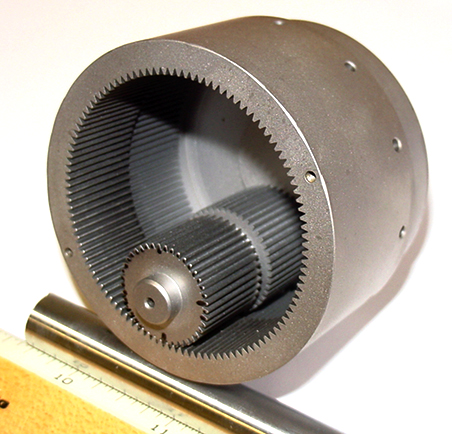Big Results From a Smaller Gearbox
Originating Technology/NASA Contribution
Many people will be sad to see the Hubble Space Telescope go, as it was the first instrument of its kind to provide us with such a wealth of imagery and information about the galaxy. The telescope has served us well since its launch in spring of 1990, but it is nearly time for its retirement. The science, however, will continue, as NASA plans the launch of a new, more modern orbiting telescope, the James Webb Space Telescope.
Named after the man who ran NASA from 1961 to 1968—years fraught with the anxiety and uncertainty of the Space Race—the scope is scheduled for launch in fall of 2011. It is designed to study the earliest galaxies and some of the first stars formed after the Big Bang.
NASA scientists at the Goddard Space Flight Center are busy developing the technologies to build this new machine. Many of the new technologies are available for commercial licensing and development. For example, the NASA Planetary Gear System technology developed to give precise nanometer positioning capabilities for the James Webb Space Telescope is now being employed by Turnkey Design Services, LLC (TDS), of Blue Island, Illinois, to improve electric motors.
This revolutionary piece of technology allows more efficient operation of the motors, and is more cost- effective than traditional gearbox designs.
Partnership
TDS is located just outside of Chicago, and is a small, full-service product design and analysis firm that specializes in hydraulic, pneumatic, and turbomachinery components and systems. The engineers at this company have experience working for companies in the aerospace, automotive, medical, and consumer product industries. One of the focuses of their design and manufacturing is high-tech gearboxes and their components.
The NASA Illinois Commercialization Center (NICC) provided TDS with a NICC Commercialization Award to license James Webb Space Telescope gear-bearing technologies for development of commercial applications in collaboration with Goddard.
The gear-bearing technology was a NASA industrial breakthrough that improved design by adding strength and improving performance while managing to reduce size, parts-count, and cost.
Product Outcome
Robert Kennedy, president and owner of TDS, says of this project, “We are excited about this technology and look forward to reducing conventional gear set cost and weight while increasing product reliability.” The revolutionary gear-bearing technology combines gears and bearing in one package, which provides a host of benefits.
The gear-bearing planetary transmission provides more even gear distribution loading and higher gear ratio in smaller packages. Use of the gear-bearing technology can increase the reliability of electric and hydraulic motor driven actuators, pumps, compressors, and gearboxes. TDS is using this technology as a planetary speed reducer for electric motors that currently use plastic, brass, or steel gears.
TDS is marketing three different prototype sets, each with the same diametral and axial envelopes, but with different ratios. The company sees a wide spectrum of uses for these sets, but intends to market them to the aerospace and automotive industries. The planetary sets could be used in the aerospace industry to open and close bay doors of aircraft and to extend and retract aircraft wing flaps. In the automotive industry, this technology could be used to open and close sliding doors on vans, to open and close lift gates on sport utility vehicles, and to move powered seats back and forth.

Although the James Webb Space Telescope is still under development and not charted to fly until 2011, it is already providing us with new science, like this gear system.













